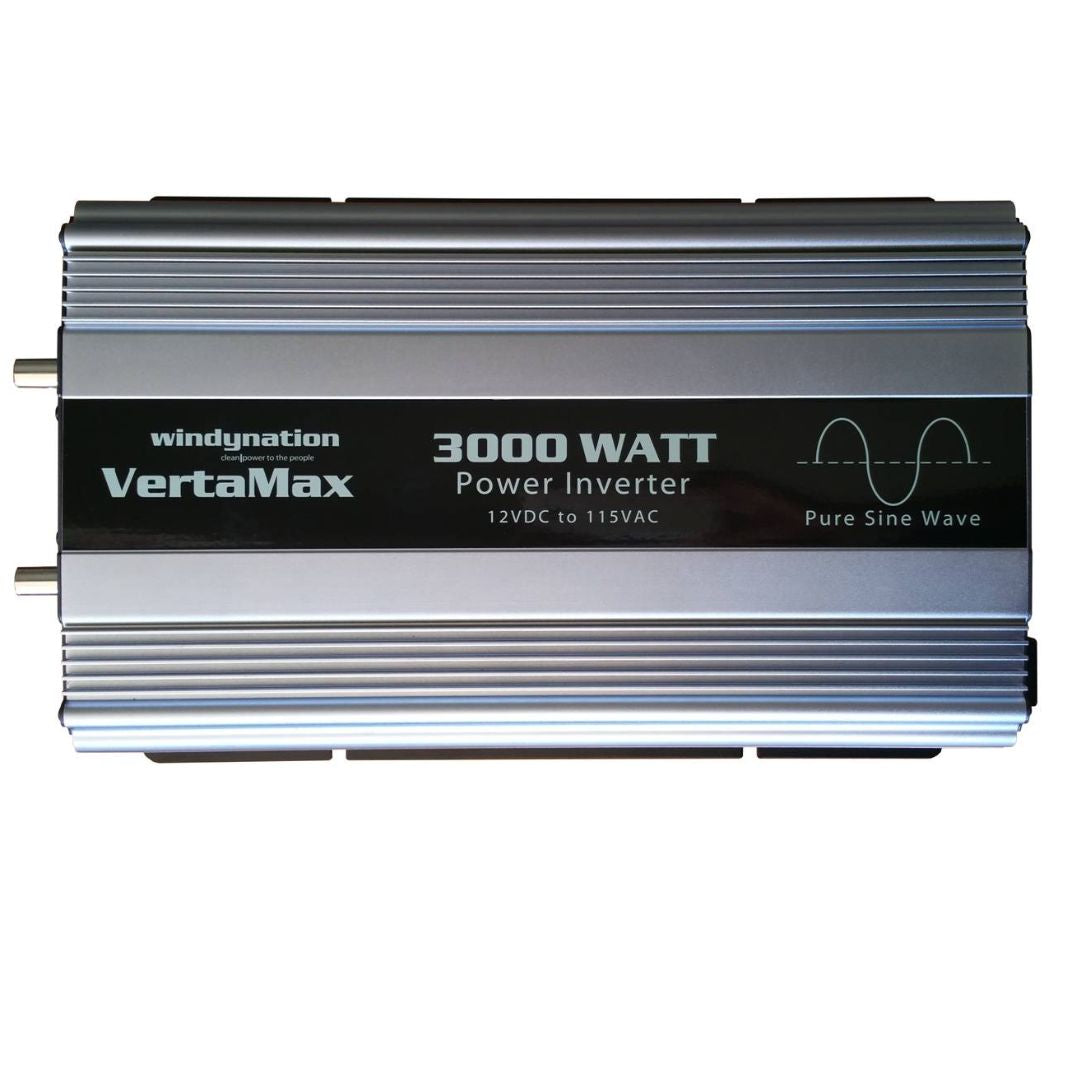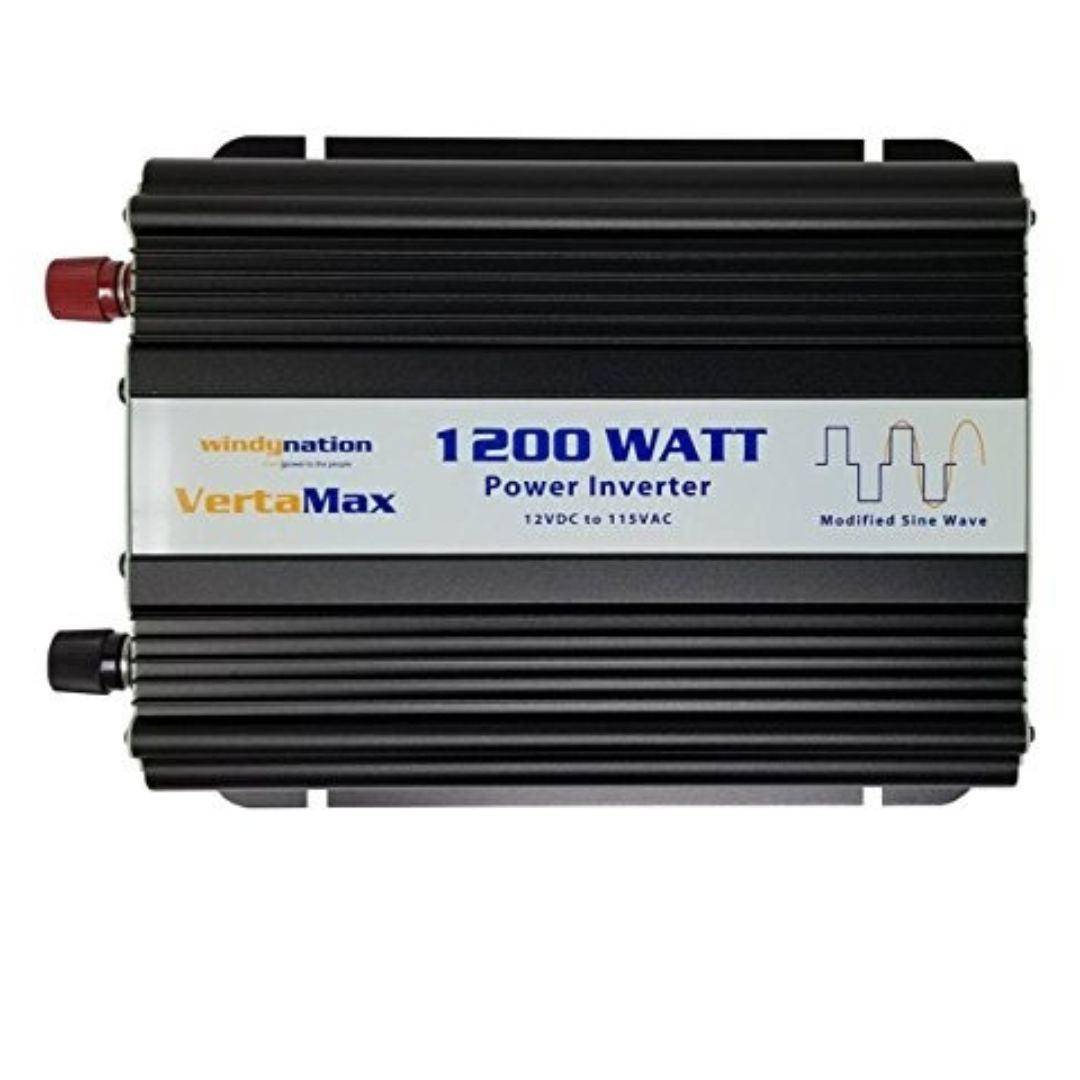Ever been on the road in your RV at dusk, dreaming of the hum of your favorite show or the aroma of fresh-brewed coffee, only to realize you’re stuck with dim lights and no appliance power? That’s where knowing how to install a power inverter in an RV comes in handy. If you’re ready to make your RV feel more like a home on the road, then understanding this process is key.
In this article, we’ll walk you through installing an inverter in your RV step by step so you can enjoy power at your fingertips. Whether you’re parked at a campsite or boondocking off the grid, we’ll make sure you’re set up to live comfortably.
What Can Be Powered by an Inverter in an RV?
Start with What You Need, Not Just the Watts
Before you jump into sizing your inverter, focus on what you need to run, not just the wattage of the appliances. Consider what devices are most important to you whether it’s your lights, microwave, fridge, or even a laptop. Understanding your essential power needs will guide you in choosing the right inverter.
A Quick Guide to Sizing Your Inverter
When selecting an inverter for your RV, it’s important to ensure it can handle the total power demand. A simple way to calculate the right size is by adding up the wattage of all the appliances you plan to use simultaneously. Then, add a buffer (usually 20-25%) to prevent overloading. Here’s a quick cheat sheet:
-
Small devices (like lights, fans): 50–200 watts
-
Medium devices (TV, laptop, blender): 200–500 watts
-
Large devices (microwave, fridge, air conditioner): 500–2000 watts
Make sure to account for any future needs or additional appliances you might add down the road.
Types of Inverters & Choosing the Right One
Pure sine wave vs modified sine wave
-
Pure sine wave: Clean power, safe for sensitive electronics like laptops, smart TVs, and medical devices. Recommended if you plan to use high‑tech appliances.
-
Modified sine wave: Less expensive but can cause odd behavior in appliances with digital controls.
Tip: If you’re powering sensitive electronics or just want long-term reliability, go with pure sine wave.
Matching size & load
To select the right inverter, you’ll need to know how much power you plan to use. For example, if you want to run your fridge, microwave, and laptop at once, add up their wattage and choose an inverter that can handle the load. A good rule of thumb is to add about 20-25% more to your total estimated load.
RV system voltage: 12 V vs 24 V
Many RVs come with a 12 V system, but if you plan to use heavy-duty appliances or even an air conditioner, you might need a 24 V system. Consider your future power needs as well when choosing between the two.
Recommended RV Inverters for a Reliable Power Setup
If you’re planning to upgrade your RV’s electrical system, choosing the right inverter makes all the difference. At Power Independence HQ, we offer high-quality, dependable inverters designed specifically for RV owners who want comfort, safety, and uninterrupted power on the road. Below are some of our top inverter options:
2. VertaMax 3000 Watt Inverter - 12V Pure Sine Wave Power for Reliable Energy Solutions
3. VertaMax 1200 Watt Power Inverter - Modified 12V Inverter for Reliable Power
4. VertaMax 1500 Watt Power Inverter - Modified 12V for Reliable Power Supply
Step-by-Step: How to Install a Power Inverter in an RV
Here’s the part where we roll up our sleeves.
Tools and Materials You'll Need
Here’s what you’ll need to install your inverter properly:
-
Multimeter to check voltages and connections
-
Wires and connectors with the correct gauge
-
Fuse or circuit breaker for protection
-
Mounting brackets and screws for secure installation
-
Grounding strap/cable to ensure safe operation
-
Installation manual for reference during the process
Prepare the Site
-
Disconnect all power: shore power unplugged, battery bank isolated. Safety first.
-
Choose a location: cool, dry, ventilated, and ideally close to the battery bank.
-
Mount the inverter securely, making sure it’s in an accessible location for maintenance.
Wiring the Inverter
-
Connect positive and negative cables from the battery bank to the inverter, use the appropriate wire gauge.
-
Install a fuse or breaker close to the battery to protect your system.
-
Ground the inverter to the RV chassis or another proper grounding point.
-
Connect the inverter output to your AC distribution panel or to dedicated outlets, depending on your setup.
-
Double-check all connections: Ensure they are tight, insulated, and clean.
Test & Verify
-
Before turning on the inverter, check for any loose connections or faults using a multimeter.
-
Turn on the inverter and verify it powers the system as expected.
-
Start with a small load (such as lights or a laptop) before scaling up to bigger appliances like a fridge or microwave.
Safety & Compliance
-
Use appropriately sized wires to avoid overheating or fire risk.
-
Ensure the inverter has proper ventilation and is not exposed to moisture.
-
If you’re unsure, it’s always better to hire a certified electrician to handle the installation.
Maintenance & Best Practices
-
In your RV: Check all wiring and connections after long trips or rough roads. Ensure your battery bank and inverter are in top shape.
-
Keep spare parts: Always have spare fuses, connectors, and wire on hand in case of an emergency.
-
Inspect regularly: Make a habit of checking the inverter’s health, cleaning any filters or vents, and making sure it’s performing as expected.
Whether you’re upgrading your RV’s electrical system or getting your home ready for off-grid adventures, knowing how to install a power inverter in an RV helps you take control of your energy needs. When done right, an inverter makes your RV feel more like a real home, with all the comforts you’re used to no matter where you are.
At Power Independence HQ, we offer top-notch inverters and expert advice to help you set up your RV or home backup system. We believe in providing you with the best tools to ensure your power is reliable, safe, and efficient.
When you’re ready to upgrade or install your inverter, visit us at Power Independence HQ. Let’s get your power system set up right!
Frequently Asked Questions (FAQs)
1. Can I install a power inverter in my RV by myself, or do I need a professional?
Yes, it’s possible to install a power inverter yourself if you have the right tools and a basic understanding of electrical systems. However, if you're not familiar with electrical work, it’s always safer to have a licensed electrician install the inverter. Incorrect installation can result in potential hazards like electrical fires or damage to your RV's electrical system.
2. What size inverter do I need for a 30-amp RV?
For a 30-amp RV, you'll typically need an inverter that can handle the maximum power demand. A good rule of thumb is to use an inverter rated for at least 2000 watts if you plan to power common appliances like a microwave, lights, or a small AC. If you plan to run a larger appliance or an air conditioner, you may need a larger inverter.
3. How long will an RV inverter last?
With proper care and maintenance, an inverter can last anywhere from 5 to 10 years. Regularly checking connections, ensuring proper ventilation, and keeping the inverter free from moisture or excessive heat will help extend its lifespan.
4. Can an inverter damage my RV’s battery?
An inverter won't directly damage your RV’s battery, but overusing it or running high-power appliances for extended periods can drain the battery quickly. If your RV battery is regularly discharged too deeply, it can shorten the battery's lifespan. Always monitor your battery levels and consider adding solar panels or a second battery for better power management.
5. What is the difference between a 12V and a 24V inverter?
The primary difference between a 12V and 24V inverter is the voltage of the battery system they are designed to work with. A 12V inverter is suitable for smaller, lighter loads and is commonly used in most RVs. A 24V inverter is better suited for larger RVs or if you plan to run high-power appliances like an air conditioner. A 24V system is more efficient and can handle higher loads without the need for larger cables, making it a better option for larger setups.
6. How much does it cost to install a power inverter in an RV?
The cost of installing a power inverter can vary depending on the type and size of the inverter, the complexity of the installation, and labor costs. On average, a quality inverter can cost anywhere from $200 to $1,500, and installation by a professional can add another $100 to $300. DIY installation can help reduce the overall cost.
7. Can I use my inverter to run my RV's air conditioner?
Yes, but only if the inverter is large enough to handle the load of the air conditioner. Most RV air conditioners require around 1,000 to 1,500 watts of power to run, and the surge when the compressor starts can be even higher. A pure sine wave inverter with a power rating of at least 2,000 watts is recommended for safely running an RV air conditioner.
8. Do I need a separate battery bank for my inverter?
Yes, the inverter in your RV needs a battery bank to draw power from. The size of the battery bank will depend on how long you want to run your inverter and the power requirements of the appliances you plan to use. Make sure the battery bank is capable of providing enough energy for your intended usage.






